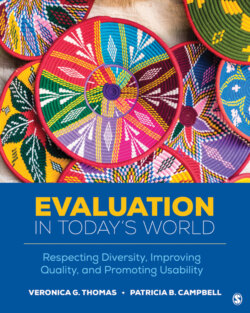Читать книгу Evaluation in Today’s World - Veronica G. Thomas - Страница 119
На сайте Литреса книга снята с продажи.
Evaluation in the First Half of the 20th Century: 1900–1950s
ОглавлениеEvaluation in the modern times of the 20th century was influenced tremendously by the social, economic, and political climate of the day. Conditions such as social inequities, escalating poverty rates, unprecedented growth and recession, political perspectives toward deficit reduction and balanced budgets, and funding for social programs all impacted interest in and the demand for program evaluation. During the early part of the 20th century, evaluation and measurement studies were occurring in various areas such as public health, mortality and morbidity from infectious diseases, housing, worker productivity and occupational training programs, and standardized educational testing (Morra-Imas & Rist, 2009; Rossi et al., 2004). Many of these studies were small-scale efforts conducted by government agencies and social services.
In 1921, two U.S. government agencies, the General Accounting Office (GAO), renamed the Government Accountability Office in 2004, and the Bureau of the Budget (BOB), which in 1970 became the Office of Management and Budget (OMB), were established, and they took the lead in conducting evaluations at the federal government level. Most of the GAO’s work involves auditing, program evaluations, policy analysis, and legal opinions and decisions on a broad range of government programs and activities both at home and abroad. While the OMB’s most prominent function is to prepare the president’s budget, it also evaluates the effectiveness of agency programs, policies, and procedures; assesses competing funding demands among agencies; and sets funding priorities.
